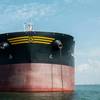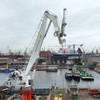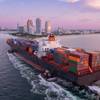Frontline Predicts Tanker Market Volatility
The tanker market improved significantly in the fourth quarter ended December 31, 2018 driven by continued strong oil demand, said Bermuda-based tanker shipping company Frontline Ltd.
According to the world's largest oil tanker shipping company, crude inventory draws reversed in the quarter, after having fallen below five-year levels and reduced the demand for crude tankers in the process.
There is a historical correlation between inventory cycles and tanker rates, it said. Crude oil supply / demand forecasts from the IEA imply that inventories will remain relatively stable over the next several quarters, which in turn should create a stable backdrop for transportation demand.
Forecasts also imply that demand growth will increasingly be geographically dislocated from incremental supply.
US production is forecasted to bring the majority of the incremental supply to the market, which will enable tonmile demand to continue to increase as surplus barrels continue to be transported to Asia. New investments in US export capacity are underway and are expected to contribute to ton-mile expansion going forward.
In the meantime, supply disruptions, which have been seen recently in Venezuela and Iran, will create further dislocation and volatility in the market.
At the start of 2018, the global crude oil tanker fleet was expected to grow by 8.3%, with 57 VLCCs scheduled for delivery. As of the end of the year, 39 VLCCs had been delivered. While new deliveries at the start of 2018 flooded the market, annual fleet growth was practically negated as 35 VLCCs were reported recycled during the year.
Notably, 12 of these VLCCs were built in 2000 or later, a clear indication of the decline in the viability of older vessels. Consistently high scrap prices, combined with a very weak freight market, drove recycling to near record levels. As the tanker market has improved, the pace of recycling has slowed down.
The orderbook for 2019 deliveries is larger than the 2018 orderbook, with 76 VLCCs scheduled for delivery. Of these, 11 had been delivered as of the end of January. Beyond 2019, the orderbook declines and currently stands at 29 VLCCs.
Under normal circumstances, the size of the 2019 orderbook would be troubling. However, there are currently 115 vessels that are over 17 years of age. Each of these vessels will be required to undergo a costly survey to continue to operate. These vessels also lack the fuel efficiency of modern vessels. This is a critically important factor as we quickly approach the implementation of the IMO limits on sulphur emissions that come into force on January 1, 2020.















